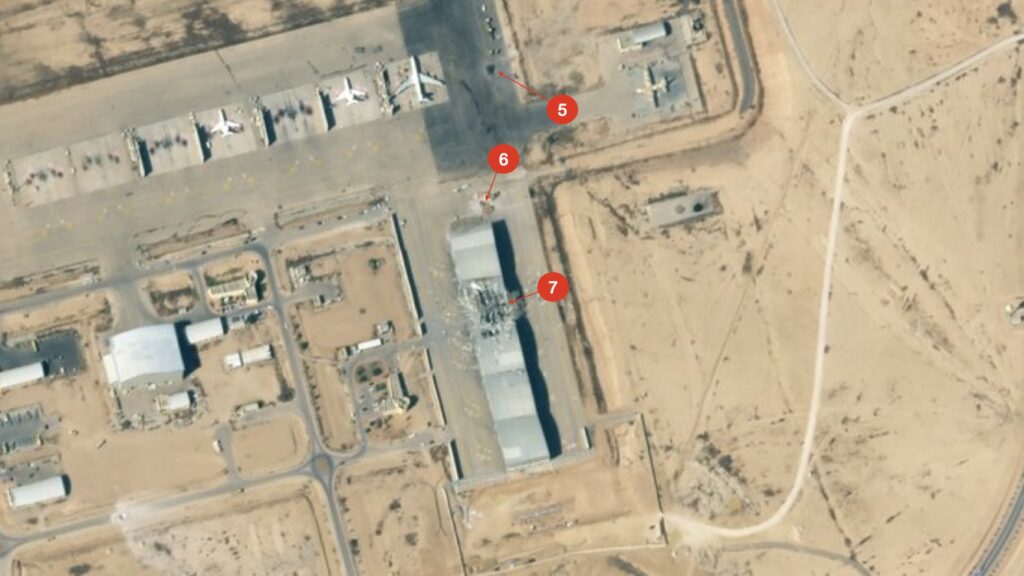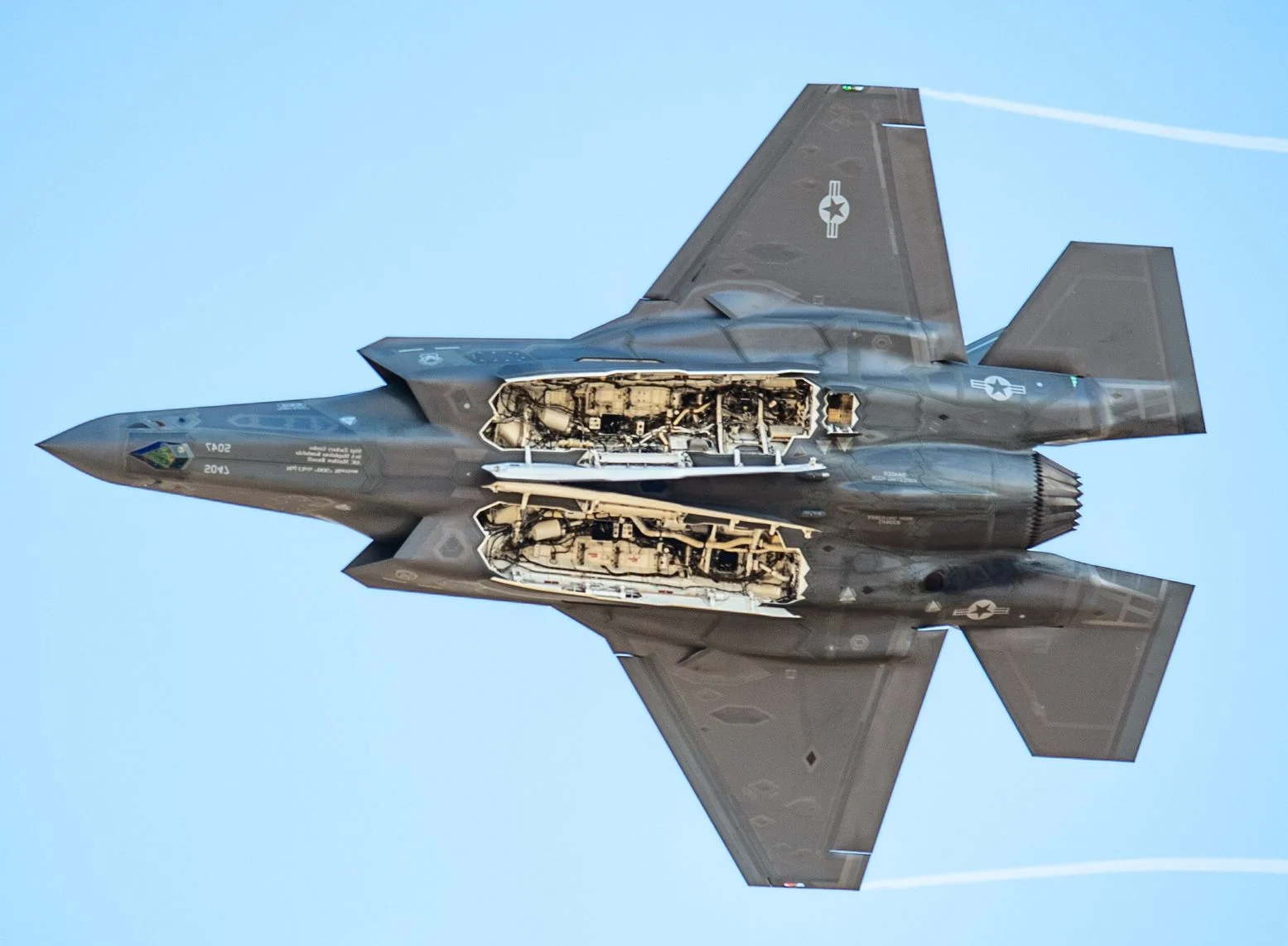In a recent claim, Iran stated it had successfully hit and wiped out entire Israeli F-35 fighter jet fleet. During Iranian Massive Missile attack they targeted Nevatim Airbase, one of Israel’s key military installations. Today, we will examine the images from this strike and analyze the extent of the damage. Our focus will remain solely on Nevatim Airbase to assess the credibility of Iran’s claims.
Satellite images taken after the missile strike reveal seven distinct impact points. For clarity, these locations are marked with arrows and numbers. The first three strikes (1, 2, and 3) landed on the runway area. Strikes 4 and 5 hit open grounds, with some debate over whether strike 5 hit the taxiway. Strike 6 occurred dangerously close to a hardened shelter, while strike 7 directly hit a shelter. Interestingly, there might be an eighth strike, but we need clearer images to confirm this.

Key Targets and Strategic Missteps
If Iran planned this strike carefully, they would focus on the runway and taxiway. These are critical to halting operations. However, repairing runways and taxiways is a quick process today. In fact, one image shows the runway already patched up. Besides, other valuable targets like the C-130 aircraft were present, including the sensor-based “eyes in the sky” systems on the far right of the base. Instead, three or four missiles directly aimed at the five hardened shelters. This decision raises questions about Iran’s targeting strategy.

Moving north, you’ll find shelters constructed around the time Israel acquired the F-35. Based on this, many believe these shelters house the F-35s. However, there are only 9 shelters there. On the southern side of the base, 14 older shelters exist, but these appear too small for the F-35. With an 11-meter wingspan and a height of 5 meters, the F-35 likely wouldn’t fit in those. So, did Iran target the correct hangars for the F-35? The area believed to house the F-35s wasn’t targeted. Either Iran missed key targets, or they had intelligence suggesting F-35s were stored in different hangars as a tactic to deceive attackers.
The Strike’s Impact
The targeted hangars measure 40 by 40 meters, each capable of holding four F-35s in a tight fit or two if packed loosely. A new satellite image shows a tail resembling that of an F-35. If hangar 2 was completely destroyed and hangar 3 was partially damaged, Israel could have lost at least one or two F-35s, with a worst-case scenario of up to four losses. Still, Iran’s claim of wiping out the entire fleet is far from the truth.

Iran’s Missile Accuracy in Question
This incident also highlights the questionable accuracy of Iranian ballistic missiles. While ballistic missiles are not known for precision, if Iran aimed to target five large hangars, runways, and taxiways, the strike rate stands at only 50%. Another possibility is that more missiles were launched, and Israeli air defense systems intercepted them. However, the fact that seven to eight missiles struck the base suggests Israel’s air defenses were overwhelmed. This indicates they couldn’t intercept all the missiles, as originally claimed by Israeli officials.
Truth in the Fog of War
As the saying goes, “the first casualty of war is the truth.” Both sides are battling over the narrative. While Iran claims to have wiped out Israel’s F-35 fleet, Israel insists the damage was insignificant. The reality lies somewhere in between. Israel may have lost one or two F-35s, but the overall damage is indeed minor. The strike did not significantly impact Israel’s military capabilities, and Iran’s exaggerated claims don’t hold up.
In conclusion, while Iran’s missile attack on Nevatim Airbase caused some damage, it did not achieve the devastating impact claimed. Israel’s military remains intact, and the narrative battle continues.
